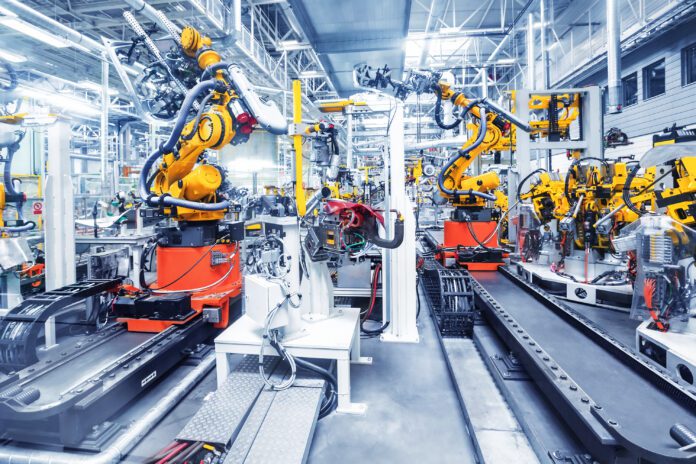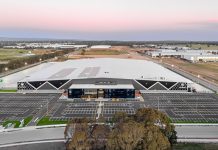
Article by Gregg Ostrowski, Executive CTO, Cisco AppDynamics
The talk around Industry 4.0 (the fourth industrial revolution) and smart factories has been dominating the Australian manufacturing sector for several years now. However, as recent reports show, adoption is largely still in its infancy, something which is holding us back.
The shift from partial to fully automated factories is incredibly complex, and this explains why most organizations are currently making slower progress than they would like. Some manufacturers are still trying to work out exactly how this new concept can best be applied within their operations, while others are facing cultural resistance. As with all digital transformation programs, there are also difficulties in integrating information technologies (IT) and operational technologies (OT) alongside legacy equipment.
Despite these challenges, there is still a huge amount of excitement about the potential benefits that Industry 4.0 transformation can deliver. From electronics, through to pharmaceuticals, mining or automotive and aerospace, Australian manufacturers recognise the opportunities for increased speed to streamline operations and stay competitive in a global economy. However, with close to a dozen interest rate hikes and national inflation at 5.6%, economic conditions will continue to be challenging throughout 2023. This means that every decision made regarding transformation will increasingly come under the spotlight.
As McKinsey has reported, data is critical to the success of Industry 4.0 initiatives. Transformation leaders depend on data to monitor and improve on performance within the context of their business goals and to enable insight-driven decision-making. This is why it is essential for manufacturers to have a full and unified view on IT availability and performance right across their IT estate. This is especially important for cloud-native environments upon which most Industry 4.0 programs are being built. Cloud-native observability is critical to optimize application performance and end-user experience, and to validate investment in any innovation initiative.
Industry 4.0 initiatives built on cloud-native technologies
The World Economic Forum describes Industry 4.0 as the fusion of technologies blurring lines between physical, digital and biological spheres, and that it will “herald the transformations of entire systems, production, management, and governance” for organisations across the world. The move to smart factories is expected to grow by 20.6% year on year over the next three years, reaching more than AUD $243 billion by 2026.
Technologies that assist and enable Industry 4.0 are evolving fast, including interconnected, shared digital platforms that support and accelerate all aspects of industrial processing. Alongside ‘internet-connected everything,’ we are also seeing rapid advancements in technologies relating to compliance monitoring, product design and innovation, time-to-market, waste reduction, pre-production testing and modifications, and distribution and logistics.
It’s important to understand that the essential foundation for much of this transformation is the wholesale adoption of cloud native technologies which we’re seeing right across the manufacturing sector. Modern application architectures, built on technologies such as microservices and Kubernetes, are enabling manufacturers to innovate at speed while delivering greater operational and technical agility and resilience. IT departments are surging ahead with their transformation programs, using cloud native, low-code and no-code platforms to accelerate release velocity and build more dynamic applications.
A lack of visibility into the cloud is becoming a barrier to innovation
However, the shift to cloud native technologies is causing significant challenges for the IT teams responsible for managing and optimizing the availability and performance of new applications.
The issue is that they’re unable to monitor these environments and, in particular, they’re struggling to get visibility into applications and underlying infrastructure for large, managed Kubernetes environments running on public clouds.
The distributed and dynamic nature of cloud native applications makes it very hard for technologists to pinpoint the root cause of issues. Cloud native architectures are characterised by a vast web of dependencies between communicating microservices and containers which create complex data exchange patterns that lead to new behaviors and fault modes. Cloud native technologies such as microservices and Kubernetes rely on thousands of containers and spawn a massive volume of metrics, events, logs and traces (MELT) every second.
Unfortunately, many IT departments simply don’t have the tools to cut through this overwhelming bombardment of data that is coming at them from every corner of their IT estate. Indeed, our Agents of Transformation 2022 report found that 65% of technologists feel overwhelmed by soaring data noise and spiralling complexity.
This lack of visibility into cloud native environments significantly increases the risk of applications failing and end users (customers, suppliers and staff) suffering poor digital experiences – something that manufacturers can ill afford. But beyond that, it also means that business and IT leaders have very limited data and insights into the impact that their innovation programs are delivering. They’re unable to connect IT performance within business outcomes and therefore they can’t validate their Industry 4.0 investments.
Cloud native observability is key to proving the business value of Industry 4.0
To overcome this issue, manufacturers need to implement a modern cloud native observability solution, which simplifies the complexity of cloud native application architectures and provides observability into highly dynamic and distributed applications, landscapes and architectures.
Manufacturers should also be leveraging the power of AIOps and business intelligence and infusing these capabilities into their cloud environments. This will enable them to automate issue detection and diagnosis using machine learning and provide insights for faster troubleshooting. Ultimately, it allows technologists to understand more quickly what really matters and enables them to prioritise their actions accordingly.
Perhaps most crucially, however, where Industry 4.0 transformation is concerned, manufacturers need to be able to monitor the health of key business transactions distributed across their entire technology landscape. If an issue is detected, they need to follow the thread of the business transaction’s telemetry data, so they can quickly determine the root cause of issues, with fault domain isolation, and triage the issue to the correct teams for expedited resolution.
This ability to generate business transaction insights in real-time, and then to view them in business-level dashboards, is essential for leaders within manufacturing organizations to quickly understand the value that their innovation programs are delivering. It means they can make rapid but informed decisions on where to focus investments based on what will have the biggest benefit for customers, employees, and ultimately, the business. And this in turn will enable them to validate their Industry 4.0 investments and achieve their transformation objectives.



















